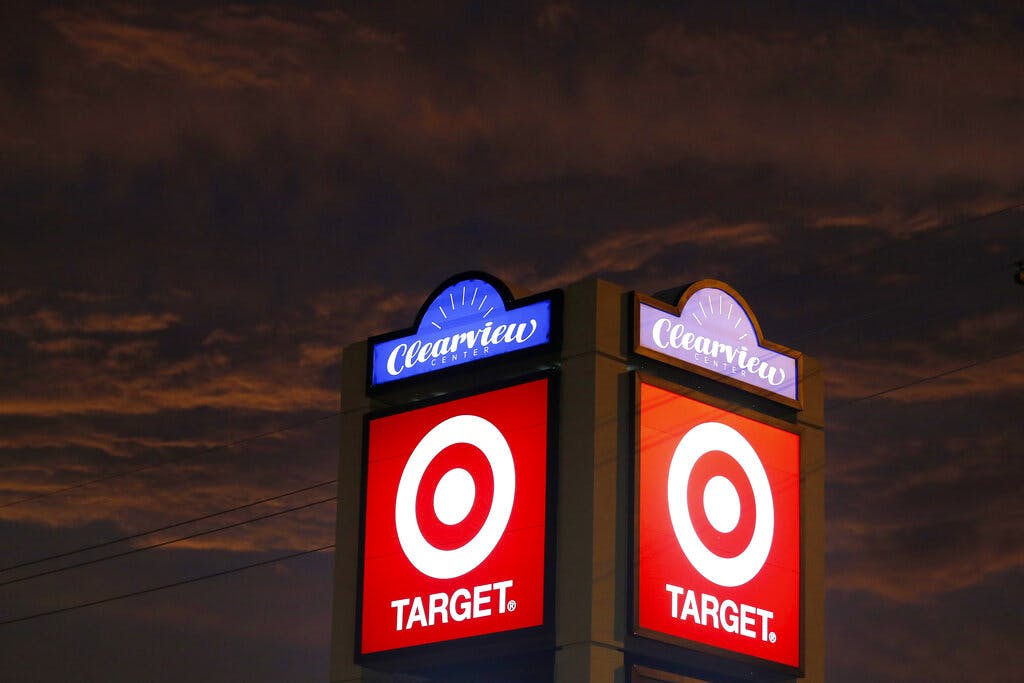Target Reports $400 Million in Losses Due to Rampant, Organized Shoplifting Gangs
Rite Aid, Best Buy, and other big-box retailers have warned for months about the skyrocketing rates of organized theft at their stores.

One of largest retailers in America, Target, said Wednesday that organized retail theft took a $400 million bite out of its bottom line during the most recent quarter, highlighting what has become a $95 billion problem for retailers in America in the past couple of years.
In a report on earnings for its fiscal third quarter, the company said shoplifting was a significant factor in the 50 percent decline in profits it saw during the quarter ending on October 29. It said it expects the theft will reduce gross margins by as much as $600 million this year.
“We know we’re not alone across retail in seeing a trend that I think has gotten increasingly worse over the last 12 to 18 months,” Target’s chief financial officer, Michael Fiddelke, said of the theft on a conference call. “So we’re taking the right actions in our stores to help curb that trend where we can, but that becomes an increasing headwind on our business and we know the business of others.”
The company said slowing sales also contributed to the decline, and urged shareholders to lower their expectations for the coming holiday shopping period. Families shocked by higher prices in its stores are increasingly opting to buy only what they need, the company said, not what they want, and that is driving down overall sales.
The falloff in sales “was a precipitous decline and, frankly, we’ve seen those trends in the early part of November as well,” the company chief growth officer, Christina Hennington, said on the call.
Target is far from alone in its attempts to curtail the shoplifting. Rite Aid, Best Buy, and other big-box retailers have warned for months about the skyrocketing rates of organized theft. Closed-circuit video of thieves ransacking stores in San Francisco and elsewhere in the Golden State led Governor Newsom to establish a task force this week to tackle the crime during the upcoming holiday season. Many chains have closed inner city locations as a result of the growing violence.
“Shopping centers across California will see saturated patrols as [California Highway Patrol] regional teams work with local law enforcement agencies to help make arrests and recover stolen merchandise,” Mr. Newsom promised.
A recent study by the National Retail Federation said what it calls a “shrink rate,” primarily driven by shoplifting, cost American retailers as much as $94.5 billion in 2021, up from $90.8 billion in 2020. Retailers reported a 26.5 percent increase in what the federation calls “organized retail crime incidents” in 2021.
“Beyond the loss of goods, these incidents are increasingly alarming,” the federation said in its report. “Eight in 10 retailers surveyed report that the violence and aggression associated with ORC incidents increased in the past year.”
More than two-thirds of the respondents to the survey said organized thefts have increased in areas where criminal justice reform advocates have convinced lawmakers to raise the threshold under which criminals can be charged with felonies for shoplifting. The respondents favor increased penalties for theft and reducing those thresholds instead.
In a recent forum on the issue organized by the U.S. Chamber of Commerce, the district attorney in San Diego County, California, Summer Stephan, said there are laws on the books in most places that require pawn shops to track thieves, but there are no equivalent rules for the social media platforms that most thieves now use to move the stolen goods.
“We have all these protections for the small pawn shops so that law enforcement can do our job and track stolen goods, but we don’t have those same protections online,” Mr. Stephan said. “[This] is what’s allowing this business — this criminal industry — to increase and become bigger and bigger to the tune of millions, if not billions, of dollars that are being lost. And that cost is passed on to customers.”

